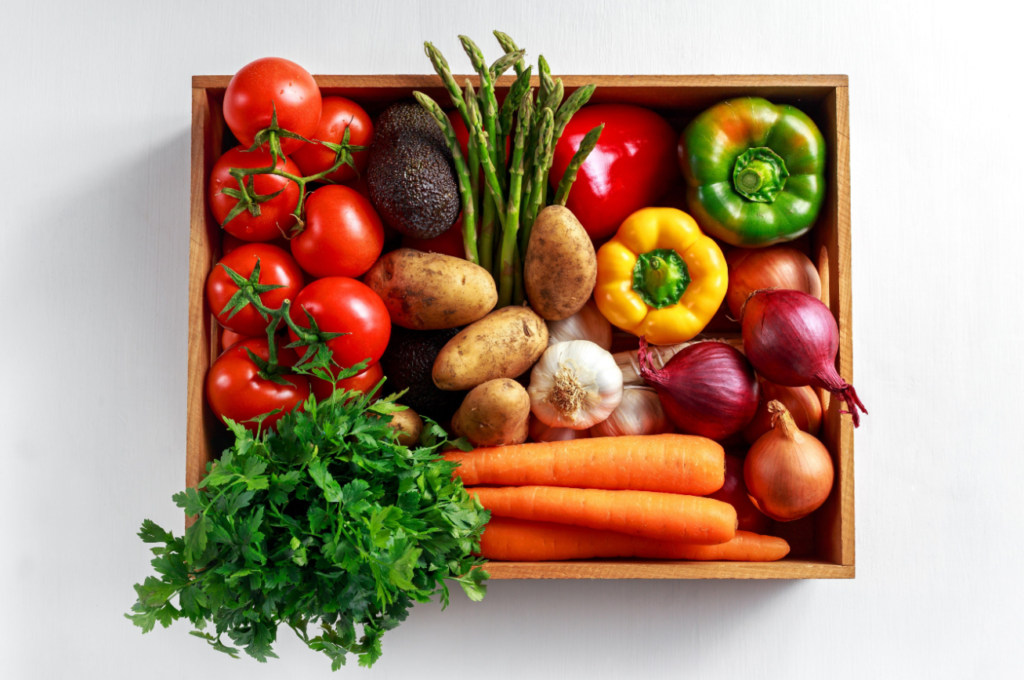A low-carb diet is a lifestyle choice that decreases your carbohydrate intake to a great extent, while increasing proteins and fats.
This balanced approach potentially aids in weight loss, boosts metabolism, improves heart health and manages diabetes. However, on the flip side, you may face risks like nutrient deficiencies or ketosis complications. Incorporating this diet requires careful carb counting and informed food choices.
Know it’s not just about dismissing carbs, but re-choosing your energy source.
Want to know the alternatives to your favorite dishes and how exercise could accelerate weight loss in this diet? Stick around, there’s plenty more to explore.

Understanding the Low Carb Diet
Often, you might find yourself puzzled by the term ‘low carb diet‘; fundamentally, it refers to a diet regime that greatly reduces carbohydrate intake while increasing proteins and fats.
Now, let’s break down the carb counting basics. You’re not eliminating carbs entirely, just reducing them. In doing so, your body enters a state called ketosis. Don’t let misconceptions scare you, ketosis is a natural metabolic state where your body burns fat for fuel instead of carbs.
But remember, exercise considerations are important; you still need energy to stay active.
The key difference between low carb versus no carb is that the latter can be unsustainable and extreme.
In your pursuit of freedom, choose a lifestyle that’s balanced and manageable.
Benefits of a Low Carb Diet
Now that you’ve grasped the concept of a low carb diet, let’s examine its benefits, which range from weight loss to improved heart health.
A low carb diet can help you shed those stubborn pounds by reducing your appetite and boosting your metabolism. It’s also highly effective in managing diabetes by reducing blood sugar and insulin levels.
For your heart health, it can lower bad cholesterol levels and increase the good ones. Additionally, it can boost your brain function, enhancing memory and cognitive abilities.
To conclude, a low carb diet can optimize your energy levels, keeping you energized throughout the day.
So, enjoy the freedom a low-carb diet provides and reap the benefits it has to offer.
Potential Risks and Downsides
While a low-carb diet has numerous benefits, it’s equally important to be aware of the potential risks and downsides that might come with it.
One such risk is ketosis dangers, a metabolic state that can lead to bad breath, fatigue, and even more serious complications if not properly managed.
Nutrient deficiencies are another concern, as cutting out certain food groups can lead to a lack of essential vitamins and minerals. You may also experience energy loss and increased cravings, especially for carbs, as your body adjusts to the new diet plan.
Moreover, the long-term implications of a low-carb diet are still under study, with some research suggesting potential risks to heart health.
It’s vital to balance your desire for freedom with informed choices about your health.
Implementing a Low Carb Lifestyle
Despite the potential risks, you can successfully adopt a low-carb lifestyle with the right approach and knowledge.
Understanding carb counting techniques is your first step, enabling you to keep track of your intake and make informed food choices.
Delving into Keto diet specifics, you’ll learn that fats should be your primary calorie source, with protein and carbs taking a backseat. As you shift, managing cravings will be key; low-carb substitutes like zucchini noodles for pasta or cauliflower rice can help.
Integrating exercise into your routine won’t only accelerate weight loss but also increase your overall health. Remember, this lifestyle is about freedom, not restriction; you’re choosing healthier alternatives, not limiting your choices.

Low Carb Diet: Meal Ideas and Recipes
To help you navigate this new low-carb lifestyle, let’s explore some delicious and easy-to-make meal ideas and recipes.
Keto friendly breakfasts can be as simple as scrambled eggs with avocado. For lunch, try a seafood based meal, like grilled salmon with a side of green vegetables.
Vegetarian options abound – a salad loaded with greens, nuts, and cheese keeps carbs low while providing essential nutrients. For snack suggestions, consider celery sticks with almond butter or a handful of berries.
Don’t forget dessert alternatives!
Dark chocolate and berries can satisfy your sweet tooth without breaking your carb budget.
Below, we delve into a smorgasbord of meal ideas and recipes that are not only keto-friendly but also palatable for anyone looking to inject some creativity into their eating habits.
Breakfast: A Keto-Friendly Start to the Day
Starting your day right is crucial, and what better way to do so than with a breakfast that’s both nutritious and in line with your low-carb goals?
- Scrambled Eggs and Avocado: Whip up a simple yet fulfilling breakfast by scrambling eggs in a dash of olive oil, seasoned with salt and pepper. Serve with slices of avocado on the side for a dose of healthy fats and fiber.
- Greek Yogurt Parfait: For those who prefer something lighter, layer unsweetened Greek yogurt with a sprinkle of chia seeds, a handful of berries, and a dash of cinnamon. This combination offers a low-carb, high-protein start, with the added benefits of antioxidants from the berries.
Lunch: Seafood and Greens
Lunchtime on a low-carb diet doesn’t mean you’re confined to the mundane. Seafood offers a plethora of options that are both satisfying and heart-healthy.
- Grilled Salmon with Asparagus: Season a salmon fillet with lemon, dill, and garlic, then grill to perfection. Serve alongside grilled asparagus spears drizzled with olive oil for a meal rich in omega-3 fatty acids and essential nutrients.
- Shrimp Avocado Salad: Combine cooked shrimp with avocado, cherry tomatoes, cucumber, and leafy greens. Toss with a lime vinaigrette for a refreshing and filling lunch.
Vegetarian Delights
For vegetarians, low-carb doesn’t mean limited choices. There’s a bounty of vegetables, nuts, and cheeses that can be combined in creative ways to form satisfying meals.
- Loaded Greens Salad: Toss together spinach, kale, arugula, walnuts, goat cheese, and avocado. Dress with a simple vinaigrette of olive oil, lemon juice, salt, and pepper for a nutrient-packed meal.
- Eggplant Lasagna: Layer grilled eggplant slices with ricotta, spinach, and marinara sauce. Top with mozzarella and bake until bubbly for a comforting dish that won’t derail your diet.
Snack Time: Smart Choices
Smart snacking is essential in keeping hunger pangs at bay and sticking to your low-carb goals.
- Celery Sticks with Almond Butter: A classic pairing, celery sticks with almond butter, offer a crunchy and creamy snack that’s both satisfying and low in carbs.
- Cheese Crisps: For a savory snack, bake small piles of shredded parmesan until crispy. These crisps are perfect for satisfying those chip cravings without the carbs.
Dessert: Sweet and Low-Carb
Dessert on a low-carb diet is far from off-limits. With a focus on ingredients that are low in carbs but high in flavor, you can enjoy sweet treats without guilt.
- Berries and Cream: A simple dessert that pairs fresh berries with whipped cream sweetened with stevia or erythritol. This treat allows you to indulge in the natural sweetness of fruit with a creamy topping.
- Dark Chocolate and Nut Butter Cups: Melt dark chocolate and spoon a layer into muffin liners, freeze until set, then add a dollop of almond or peanut butter and cover with more chocolate. Freeze again until solid for a homemade take on a classic treat that fits within your carb budget.

Recap
So, there you have it.
A low carb diet can offer numerous benefits, like weight loss and improved heart health. But remember, it comes with potential risks and requires a lifestyle change.
Always consult your doctor before starting. With careful planning and delicious recipes, you can make your low carb journey enjoyable and successful.
So, ready to embrace a low carb lifestyle? Your health might just thank you for it.

